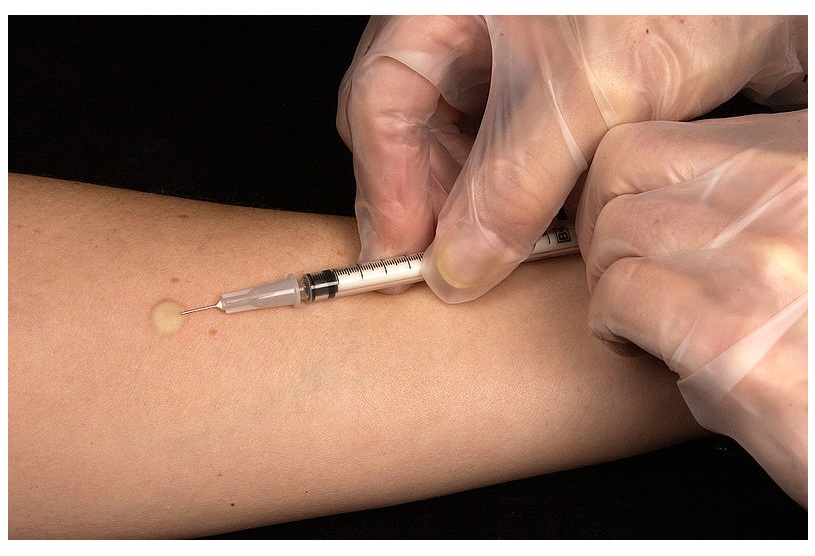The path to diagnosing TB
How a health worker diagnoses TB and which tests are done
Alex Müller
March 31, 2016, 3:28 p.m.

Because TB is not easy to diagnose, the path to diagnosing TB usually involves a number of clinical investigations and tests, which together make up the evidence of TB infection. Some of these investigations provide hints that the body might be infected with TB (for example by showing signs on a chest x-ray), and others will then provide proof that this is the case (by finding Mycobacterium tuberculosis). It is important to know all the investigations that usually take place, to know how they work and what they can and cannot prove.
The term active TB describes an infection with Mycobacterium tuberculosis in a stage where it can be transmitted. In order for this to happen, the bacterium must have gained access to the airways. It is transmitted in droplets through coughing or sneezing. Active tuberculosis is diagnosed by finding Mycobacterium tuberculosis in a clinical specimen taken from the patient. Latent TB, which means being infected with the TB bacillus but not having symptoms or active bacillus action, is more difficult to diagnose. Here, health workers rely on investigations that give clues and hints for TB infection. Often, there is no certainty. Read about the different diagnostic tests.
If a person suspects that she or he has TB, this is what a health worker will do to find out whether or not the suspicion is right:
- The first step to diagnose TB is take a medical history.
The health worker will ask about symptoms of TB (night sweats, weight loss, cough), about contact with people who have TB, and about risk factors for contracting TB (such as HIV infection).
- The health worker will then do a physical examination.
This includes checking a person's weight, general physical condition, checking the lungs and other parts of the body that can be affected by TB. If the health worker suspects TB, she or he will ask the patient to have a chest x-ray done. This often gives important hints that point towards an infection with TB. The x-ray can be done and read immediately.
- Simultaneously, the health worker will order an investigation to find the TB bacterium.
This test can be done in two ways: by sputum smear or by TB culture. For both tests, the person with suspected TB needs to cough up sputum (sputum is thick mucus coughed up from the lower airways). This is not always possible, and makes it sometimes difficult to do these investigations.
For a sputum smear, the health worker looks at the sputum through a microscope and tries to find TB bacteria. This can be done in a few hours. For a TB culture, the sputum is sent to a laboratory, where lab technicians try to grow more TB bacteria (if there are any in the first place). This usually takes at least 3 weeks, and the person with suspected TB has to wait for the results. One important thing to remember is that Mycobacterium tuberculosis can only be found in sputum if a person has active, pulmonary TB, meaning she or he coughs up the TB bacterium.
Often, especially in HIV-positive people whose immune systems have become very weak, a person can have TB and yet no TB can be detected in their sputum under the microscope. This is smear-negative TB. The TB in their sputum will still grow in culture, but since this takes a long time, it might be weeks before the person's TB status is known.
In the last year, a new TB diagnostic machine has come onto the market called the Gene Xpert. It is more accurate than using a microscope and detects TB in two hours. But it is expensive and not widely available at the time this article was written.
- If the health worker suspects the person to have latent TB (being infected with the TB bacillus, but not having symptoms or transmitting the bacillus), then she or he will order a tuberculin skin test. It is also known as the Mantoux test. The health worker will inject a small amount of attenuated TB bacteria into the skin on the person's arm. Attenuated TB bacteria are bacteria that look and behave like the normal Mycobacterium tuberculosis, but cannot do the same harm because they have been 'tamed'. The results of this test are ready after 2 days, and the person will have to come back to the health worker to have the test interpreted.
Mycobacterium tuberculosis is often difficult to find. This is because of its thick cell wall and its ability to live in isolated body cavities without air, which cannot be reached (see A description of the TB germ). For this reason, the health worker often needs to combine the investigations described above. It might also be necessary to repeat an investigation.
It is very important that after a person is diagnosed with active TB, everybody who lives with that person or has close contact with the person is also tested for TB. This is called contact tracing (a term that comes from the discipline of Public Health), and is done to prevent TB spreading widely through populations.
